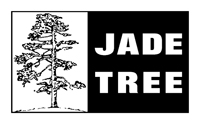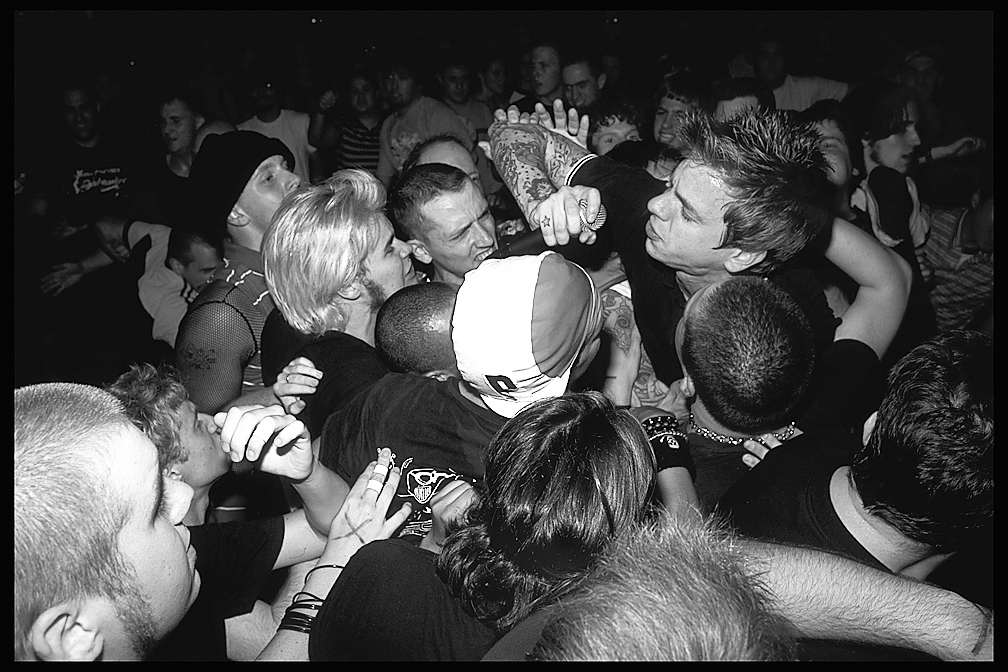After their first year together, Vic Villarreal’s guitar teacher told his step-father that he could no longer accept his money for Vic’s lessons.
“Your son’s just not picking it up. He can’t read; we keep going over the same things in practice; he’ll watch my fingers and he’ll be playing the same thing, but he’s not reading the music.”
The beginning of Villarreal’s musicianship is replete with the romance of an underdog story. A man whose style of playing suffered relentless criticism but ended up, in no small part, informing some of the most recognizable guitar styles that would soon encompass the emo world. Vic’s style brought intrigue to his band Cap'n Jazz, an act known for their overt but youthful oddness and musical risk-taking.
Over the phone, Villarreal’s voice is soft in a way that can only belong to a spirit made gentle from deep introspection. This feeling comes through when he openly discusses his experiences with mental illness. Vic Villarreal experiences depersonalization and it affects his social life as well as his music making process.
“It’s like watching a movie, a lot of the time, of myself. When this condition kicks in, it feels like I’m the person in the first three rows with popcorn, watching everything that’s going on around me. It used to be something I thought was really cool until it got to a point where it began to affect me. It oftentimes feels like it wants to consume me, like it wants to end me and everything I can do, and everything I love doing. Especially music.
Sometimes it’ll happen during shows, when I’m writing in practice...It feels like I’m not really the one playing the guitar, I’m watching the guy play the guitar. It interferes with what I want to do but sometimes [when playing music] it can be a happy accident where a really cool thing comes out because I’ll be focusing on something else like trying to wrestle with this thing inside of my head and while I’m doing it this other guy is playing the guitar and some weird shit comes out. It’s really good to have another person around when I play music because it clicks on and off and something interesting will happen when I’m not paying attention, when I’m watching my movie. The biggest challenge to me is playing solo.”
Learning of Villarreal’s lifelong task of trying to stay as active as his mindset pushes him to be is a reminder of the too often overlooked and even more often ignored presence of mental health issues plaguing the artists whom we revere; And it’s an unseen facet throughout Cap’n Jazz’ narrative. Oftentimes, mental illnesses are deemed unimportant and/or kept secret until forced into light, usually on terms that do not benefit the artist or, until the artist has succumbed to the control of that mental illness. Worse yet, the admitted struggles and cries for help embedded in the their work, are sometimes only discovered or given the attention they require once it is too late. Villarreal lives and creates despite his inclinations to internalize the experiences which fortifies his resilience, as well as giving rise to new opportunities to develop his already very distinct style of guitar playing.
Villarreal’s style, however impossible it may be to replicate, is based on a rudimentary understanding of theory and Villarreal’s love of prog rock, metal, and classical guitar. Villarreal’s early influences and first musical loves may not mirror those which other subjects of these posts may cite, but his journey into punk and DIY is all the more interesting for it. In it is a chance to explore Cap’n Jazz as a social and musical product of placing classically inclined, self-taught, and beginner musicians whose in the same group.
A 14 year-old Villarreal would first meet Tim Kinsella, who was a year older, in 1989 at a school where Villarreal was skateboarding. Kinsella was waiting for a friend who would never show, while Villarreal practiced tricks on a two-stair set on the school’s premises. Kinsella approached him asking his name, informing him that he skated too. Villarreal marvels at the serendipity of their first encounter.
“It was the coolest thing because had they met up that day or had I just for some reason decided not to skate at this cool little drain/two-stair area at this school we wouldn’t have met.”
Villarreal could tell that Kinsella was unlike anyone he knew:
“He had on a black shirt that had black permanent marker on it that said ‘Toejam’ and it was clearly something he had made himself.
Upon asking what Toejam was, Kinsella responded that it was a band he was in. Villarreal, who had always wanted to play in a band was intrigued from the jump. Upon learning that Tim played guitar, Vic told him that he did too and asked him what kind of music he played, expecting a performance of virtuosity when Tim said he played “really fast.”
“I remember sitting on the couch [at the Kinsella’s house] and he [Tim] handed me a guitar and I was just playing something that my classical guitar teacher was trying to teach me to read, and I learned it, but I learned it just from watching his hands. And Tim was like, ‘MIKE GET DOWN HERE,’ and and I literally didn’t know him at the time, and Mike comes down and he was like ‘Holy shit’ because I was playing some classical song I learned, and they were both really entertained by it. And Mike asks me how I learned to play, and I told him I took guitar lessons for a year, and they were like, ‘What?’
And so then I’m like ‘Tim, I wanna hear you play, man’ because of what he told me before about how he likes to play fast. He takes the guitar and bars a chord with his index finger while his right hand is just strumming as fast as he can, and it was like nothing I ever thought he was going to sit down and play. He sounded like he was just joking around or something. (laughs) It was awful. Well, it was awful to me at that time because I really just thought that classical guitar was the shit.”
Toejam, a two-year-old project beginning in Villarreal’s freshman year of high school, was, as he describes, a “hardcore” band, which he joined after befriending the Kinsellas. The group was shared with two mutual friends on bass and drums. Toejam’s attitude was very much a product of their youth. The songs would be about things like everyday objects and the ingredients on the back of junk food. But this youthful spirit would become conceptualized and reified as their particular style as Cap’n Jazz moved through their teenage years.
Sam Zurick had drifted into their friend group because of the close proximity of his locker to Tim Kinsella’s, and his interest in befriending musicians slowly evolved into becoming one himself. When the bassist and drummer of Toejam left the band, Zurick saw a chance to try his hand at making music, stepping into the new group as a first-time bass player. Initially, Zurick just wanted to hang out, becoming a regular spectator at Toejam practices, and later a mascot of sorts who would dance onstage with the band at their freshman and sophomore high school variety shows (two of Toejam’s most notable performances.) Mike Kinsella ended up joining Toejam toward the end on second guitar, and the initial grouping of friends that would become Cap’n Jazz was formed.
Villarreal’s obsession with Iron Maiden, prog rock, and classical guitar and the like “took a total 180” when he started listening to Danzig and the Misfits, as well as Bauhaus and The Cure, and falling in love with skateboarding, which of course brought skate punk with it. Villarreal’s attention was largely caught by the H-Street skate team, which included legend Mike Carroll, Mario Rubalcaba, who was also the drummer for the bands Rocket From the Crypt, Hot Snakes, and currently OFF! and would later sign a 14 year-old Danny Way. Around this time Villarreal would get into bands like Fugazi, 7 Seconds, and Shudder To Think, who would all highly impact Villarreal’s style when playing guitar affected by a newfound punk sensibility.
For Vic, around this time, the different spectrums of rock music were very clearly divided into categories of punk, hardcore, and alt-rock. It’s the third grouping which Vic cites as Cap’n Jazz’ most important influence: Jane’s Addiction. Besides Cap’n Jazz’ scene peers Gauge, Jane’s Addiction has been the only act that each of the members all felt strongly connected to, and for Villarreal, the band was more than that.
“Their songs were like paintings. That’s the only way I can describe them, and the way I looked up to them. I still admire them to this day and I think I will always have a special place for them because they influenced me to start writing differently. To look at a song as a blank canvas when you begin writing it and start with a certain color for the mood, or a certain chord for the mood of the song.”
The band functioned effectively as a four piece comprised of Villarreal, the Kinsellas, and Zurick for most of their time as a band. Cap’n Jazz did the first of their two tours during their initial time as a band formatted this way. The introduction of Davey vonBohlen as second guitarist brought a new power to the Cap’n Jazz sound, punctuated by vonBohlen’s intricate and delicate additions to the riffs and chord progressions that Villarreal would introduce to the songs. After becoming comfortable with each other as an ensemble through playing a number of shows around the area as a 5-piece, the band planned its second tour, which would prove to be their last.
During this time, Vic and Sam’s alcohol and drug use were at a high. Villarreal had prepared himself for the upcoming tour by stockpiling drugs to take with him. He overdosed after the first week of the trip. Fortunately, the rest of the band recognized this as an opportunity to help their friend; They canceled the tour and checked Villarreal into a hospital. Although a dark time in Cap’n Jazz history, this shouldn’t go without mention. When you think again about the scores of musicians who have suffered from issues of substance abuse and mental illness, remember artists like Kurt Cobain and Nina Simone, whose troubles went unnoticed, ignored, and were ultimately exacerbated. Vic Villarreal was treated with true friendship and even at the end of Cap’n Jazz, that friendship endures and grows with time. The many related ensembles that emerged in the wake of Cap’n Jazz, for Villarreal, Owls, Ghosts and Vodka, and his solo project under his own name are manifestations of a friendship and understanding whose importance and strength extends past reunion shows and reissues.
Villarreal has been able to continue his path of creation and self-expression because of a chance meeting at a school, and a vinyl anthology that he feels is “the coolest thing to ever happen.” His future plans are to give online guitar lessons via his website Victorvillarreality.com and create a book of tablature for songs by the various bands he’s played in, at long last providing concrete representations of Cap’n Jazz songs. Such plans are imminent, allowing for many guitar players of varying ages and skill levels to be set down the path of finding their own way to connect with their instrument the way that he does, while also learning the guitar parts that brought mid-90’s emo out of the underground and into the canon of indie rock. Fortunately, we haven’t reached the end of Vic’s movie.














